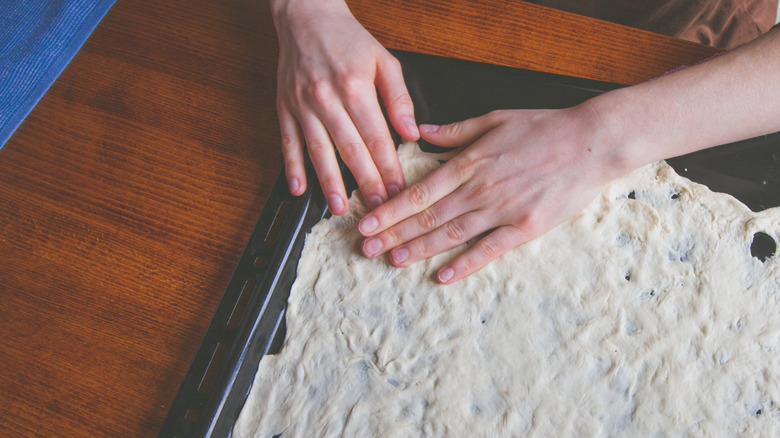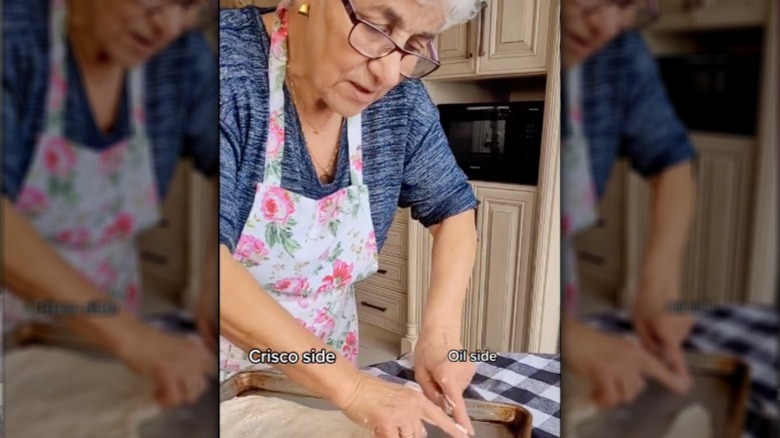Crisco Makes Homemade Pizza Dough So Much Easier To Prepare
We confess: the first oil we associate with pizza is not Crisco. We associate Crisco and solid shortening with baked goods — though apparently, it has many more uses. But surely savory, yeasty Italian breads like focaccia and pizza should get the olive oil treatment, no? Well apparently, Nonna Elda (aka TikTok user nonna.elda.cooks) doesn't think so. She's shared a video in which she espouses — and demonstrates with her own skilled hands — the superiority of Crisco for your pizza-baking routine, particularly for the stage in which you stretch the dough into the pan.
What makes Crisco better? Simply put, shortening is a plastic fat: it holds its shape. This means that it also helps the things it adheres to keep their shape. If you've ever been frustrated by dough that won't fill out the pizza pan (hypothetically, to the point of picking up your dough and hurling it at the wall because it JUST WON'T STRETCH OUT — hypothetically of course), you'll be relieved to see what Crisco can do for your dough-stretching skills. Oil acts like a banana peel in the pan, letting the dough slide around, slipping this way and without staying put. As soon as you think you've got one corner set up and turn to another bit of pizza dough, the first corner starts curling back up. Crisco, instead, works more like velcro, keeping the dough you've stretched out rooted in that spot.
Crisco in the pan soothes the soul
Nonna shows you how it's done, without any fuss and without any apologies, and it's wonderful to see her at work.
@nonna.elda.cooks Science experiment! #Nonna #pizza #Pizzahack #italianfood #makepizza #cookinglesson #cookinghack #italiancanadian #pizzadough #cook #easyrecipe
She does her own little experiment with Crisco on one side of the pan and oil on the other. The Crisco side clearly works better. While we see that Nonna is preparing a rather thin-crust pizza — hers is in a rectangular pan like a traditional nonna pizza — the Crisco trick is apparently even more helpful when making a thick-crust pizza, as it allows you to build up the edge on the sides more naturally and easily.
We should note, too, that Nonna has not recommended using Crisco in the dough itself. Some bakers prefer to integrate Crisco into the pizza dough-making process, rather than the more traditional olive oil. This, however, is a more controversial position, since the flavor profiles of olive oil and shortening are quite different, and most people enjoy the distinct flavor that a good olive oil lends to any recipe. Though they don't always enjoy the greasiness it might add, which is another way that lining the pan with Crisco helps — the crust will have a drier, less-oily finish.

